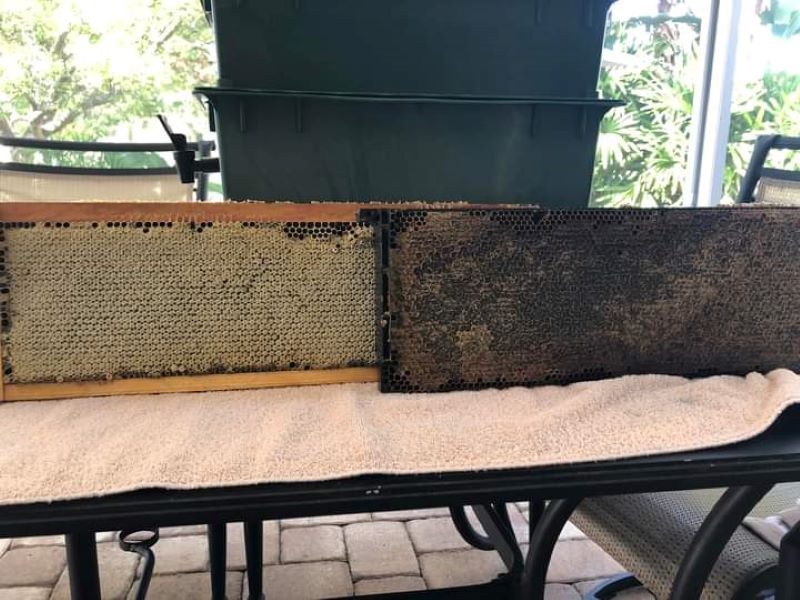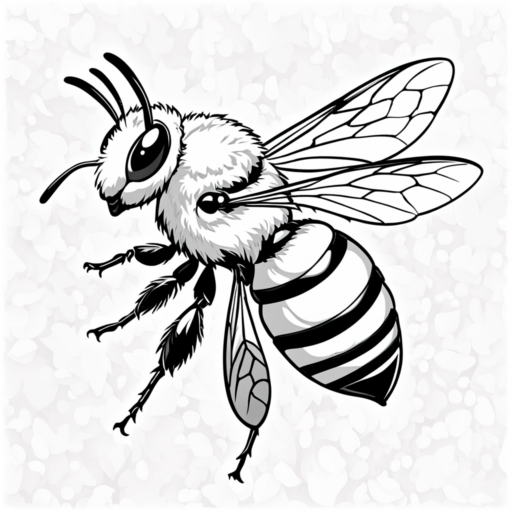What I Learned About Color Differences in Capped Honey
As a first-year beekeeper, I was excited to harvest honey from my hive for the first time. I had imagined golden, amber-colored honey, but when I removed the cappings from the frames, I was surprised to find dark, watery honey beneath.
At first, I wondered if I had done something wrong. But after some research, I learned that honey color can vary depending on the nectar sources the bees visit. In my case, the darker honey was likely from ivy, which tends to produce a darker, more watery honey.

It turns out, darker honey is perfectly safe and has its own unique, rich flavor. While it wasn’t the golden honey I expected, it was a pleasant reminder of how unpredictable and fascinating beekeeping can be. Each batch of honey, with its varying colors and tastes, tells a different story of the bees’ hard work and the flowers they’ve foraged from.
In this post, we’ll explore the reasons behind these variations in honey cappings and answer whether your honey is safe to consume.
What Are Honey Cappings?
Honey cappings are the beeswax coverings that the bees place over honey cells once they’ve finished ripening the honey. The appearance and texture of the cappings can vary depending on the state of the honey, the time of year, and the nectar sources available. However, these variations are usually harmless and part of the natural process.
Types of Honey Cappings and What They Mean
1. White, Firm Cappings
Typically, honey that is fully ripened and has low moisture content will be capped with firm, white beeswax. This honey is usually safe to consume, as the bees have finished processing and curing it.
2. Dark, Watery Honey
If you encounter honey that looks dark and watery under the cappings, it may not be fully ripened yet. Some possible causes include:
- Late-Season Nectar: Honey from nectar sources like ivy or oilseed rape can be darker and take longer to ripen. These types of honey often have a thicker, more viscous texture and may appear more liquid.
- Moisture Content: If the moisture content is too high, the honey may remain watery. Beekeepers often check honey’s moisture content with a refractometer to ensure it’s within a safe range (around 17-18%).
3. Crystallized Honey
Crystallization is a natural process where glucose in honey forms crystals, turning the honey cloudy or grainy. This can happen to any type of honey, regardless of color, and is completely safe to eat. In fact, some people prefer crystallized honey for its texture. You can gently warm it to return it to liquid form if desired.
4. Sugary Honey
Honey made from sugar syrup, while still technically safe to consume, may have a different texture or taste compared to natural nectar-based honey. It may appear more liquid and not have the full flavor profile of raw honey.
Is Honey Safe to Eat?
The Short Answer: Yes, Most Likely
Generally, honey with different-colored or watery cappings is safe to eat as long as it smells and tastes normal. There are some key things to check:
- Smell and Taste: If the honey smells fresh and doesn’t have any off or fermented odors, it is most likely safe.
- Moisture Level: High moisture content can lead to fermentation, so it’s essential to ensure that the honey’s moisture level is appropriate. A refractometer can help measure this.
What Should You Do With Honey That’s Not Fully Ripened?
If the honey under the cappings isn’t fully ripened, you have a couple of options:
- Leave It for the Bees: If you’re unsure about the honey’s readiness, you can leave it in the hive for the bees to process further.
- Monitor and Harvest Later: Allow the honey to fully mature before harvesting. This ensures it’s in the best state for consumption and minimizes the risk of fermentation.
Conclusion: Variations in Honey Cappings Are Natural
In summary, variations in honey cappings—whether dark, watery, or crystallized—are a normal part of beekeeping. As long as the honey smells and tastes good and the moisture content is within a safe range, it should be safe to consume. Keep in mind that honey from different nectar sources may have different textures, colors, and ripening times, but these variations are typically nothing to worry about.
Happy beekeeping! 🐝🍯
